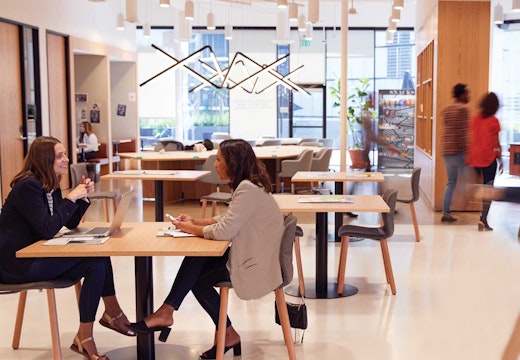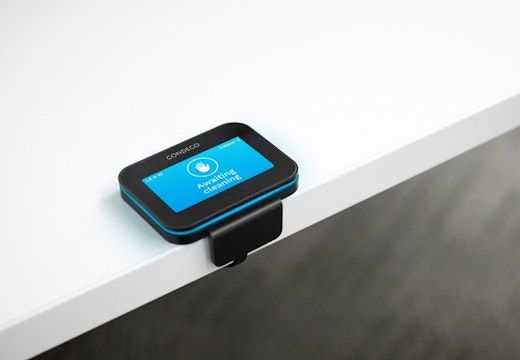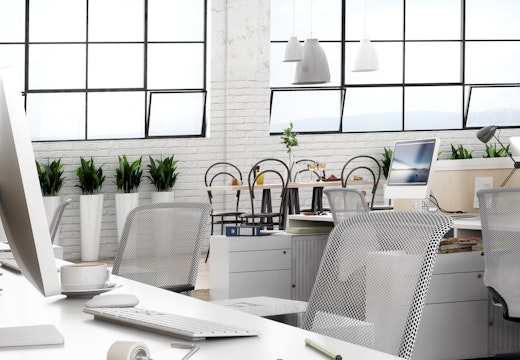Why businesses can’t afford to get the great office return wrong
As companies contemplate reopening their offices in the wake of Covid-19, Condeco Software outlines what a return to work can look like for business with strategic planning and successful technology integration
Offices closed, employees working from home and business meetings being conducted at dining room tables and in DIY home offices: it’s business as usual for the workforce in what we now describe as the ‘new normal’ and how we envision work in the future following the impact of the Covid-19 pandemic.
But whilst employees acclimatise to working in and around their normal living spaces, business leaders across the world are making preparations for buildings, offices and workspaces to receive workers once the lockdown restrictions are lifted. What will this look like and what are the consequences for getting this wrong?
Employee safety
Primarily, the number one focus of the return to work strategy is the health and safety of employees. Government guidelines will dictate the basis of what actions need to be adhered to in their workspaces, but if employees do not feel safe or are not convinced that their organisations have provided a robust, secure and safe setting for them to work in, people will be hesitant to put their health and wellbeing at risk.
The mental challenge for many employees will start from the commute to work, in particular, individuals that use public transport to travel to and from work in densely populated cities and built-up areas where there are larger volumes of people. When workers arrive in the office, providing an environment that caters for the wellbeing of their physical, mental and emotional health is critical, especially in the initial transitional stage.
Employee training and communication
Implementing new working processes and following government guidelines on social distancing at work is just the first hurdle, making sure employees understand and follow the new procedures is the next.
Before employees even begin to think about getting back to work, it will be absolutely crucial to ensure that new rules and guidelines are communicated clearly concerning desk allocation, sanitisation processes and movement around the workplace.
If employees fail to follow the new measures and do not observe social distancing rules, they risk the health and safety of their fellow workers and colleagues, which could lead to further lockdown restrictions and ongoing damage to business functions and operations.
Managing the post-virus office
When the economy reopens for business, getting ahead of the competition will be critical for every organisation in every industry. Businesses that are well prepared and have a comprehensive solution for dealing with the new workplace post Covid-19, will have the competitive edge. To put it simply, the sooner a business becomes operational the sooner they can get back to business.
The pandemic has left most companies reducing budgets and cutting costs, so the temptation to provide a makeshift or less robust solution to deliver the management of new processes is high. However, businesses that opt for a less effective solution to deal with new social distancing, sanitisation and contact tracing guidelines are putting themselves at risk of further shutdown periods if any employees become infected. This will cause more interruption to productivity, detrimental effect on revenue and have a significant impact on employee trust, confidence and wish to return to the office.
The benefits of implementing technology as a solution gives businesses the opportunity to integrate new procedures quickly and deliver an efficient solution that will handle the workspace and office throughout the pandemic period and beyond. New ways of working are here to stay and when employees do start to come back to the office, it will be to collaborate and meet with customers and colleagues. Most businesses have widely recognised that their day-to-day work can happen from the home office – at least for part of the week.
‘Desk management software gives the ability to see where people were present in the workspace…’
The key proficiencies that technology can provide include the secure storage of data for contact tracing. Desk management and workspace software gives office managers and HR departments the ability to see where people were present in the workspace at any given time and who they interacted with should a member of staff become sick.
Another way in which software automation offers core benefits include communications for sanitisation. Once an employee has finished with a workspace, whether that be a desk, meeting room or communal area, electronic communications can be delivered to cleaning services to sanitise the workspace and get it ready for the next person to use.
Technology solutions also provide support for employees working from home who are planning to visit the office – they give access to desk and workspace booking applications for enhancing productivity, scheduling and enabling people to collaborate with their colleagues face to face.
Find out more
From the way that we live to the way that we work, our personal and professional environments have changed drastically. As people begin to head back into the workplace and understand what the new normal looks like, technology solutions can aid in supporting a flexible, safe and secure workplace.
Find out more about the technology enabling this return to the office here.








